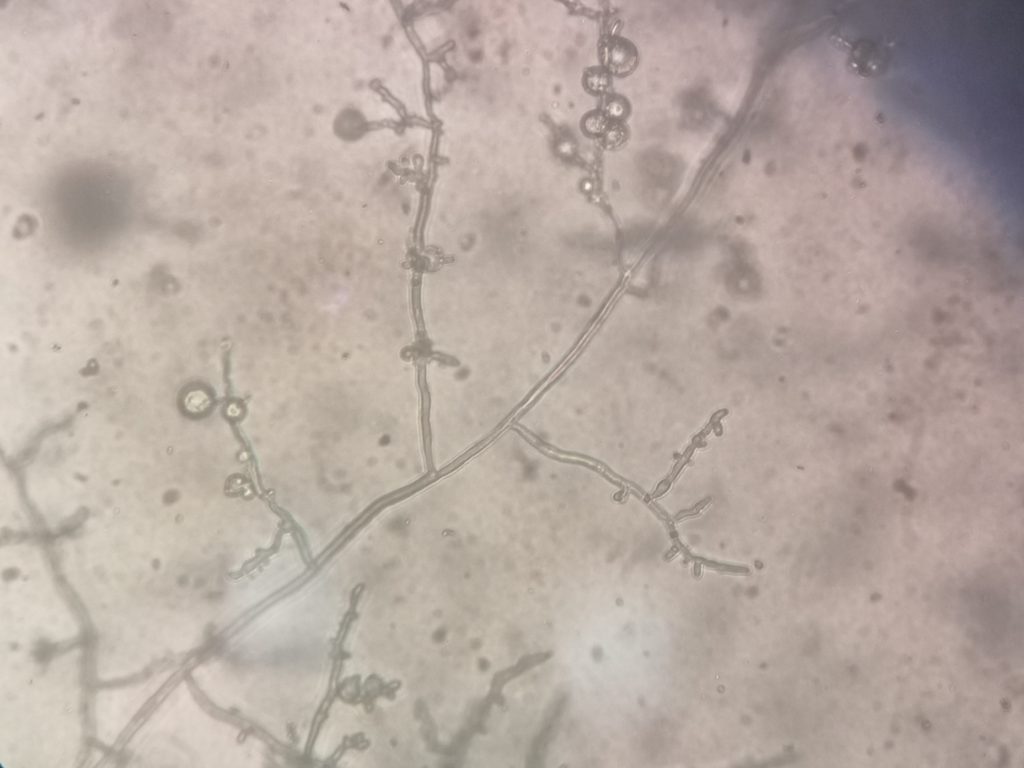The aim is to prevent the introduction or minimise the spread of Phytophthora into uninfected areas, and to reduce the impact of dieback disease at infected sites in the Otways.
Changes to forest canopy health and vegetation health over the past 20 years across the Otways has been captured and mapped; and priority protection areas (PPAs) identified. These are areas of valuable biodiversity that demand active management, including aerial spraying with phosphite, for long-term protection against disease impacts. Areas of Carlisle and Anglesea heath have been hand sprayed.
Standard Operating Procedures are being developed, and training delivered to land managers and community in phytophthora hygiene protocols. Training in phosphite spraying will follow.
A habitat rehabilitation trial will monitor the re-establishment of susceptible heathland species within dieback affected areas of the Eastern Otway Ranges; and test the efficacy of differing phosphite treatments.




The lead consultant for this sub-project is Barbara Wilson Pty Ltd.
The project delivery team includes Dr Barbara Wilson, Professor David Cahill (Deakin University), Dr Mark Garkaklis (Barbara Wilson Pty Ltd and State of the Environment Pty Ltd – Aireys Inlet ), Dr Terry Walshe (The University of Melbourne), Dr Tricia Wevill (Deakin University), and Dr Sarah Barrett (Research Partner – WA Department of Biodiversity, Conservation and Attractions). Dr Linda Parker (University of Melbourne) will also collaborate through her research into the conservation of Tall Astelia.
A Deakin University Otways region Phytophthora research program will be undertaken to determine the current extent of infestation by P. cinnamomi; model the rate of spread and determine areas of high vulnerability to disease; conduct in-field pathogen testing; and use phosphite as a control measure at site and landscape scales.
This training video can be used to show people working and recreating in the Otways how they can play their part in stopping the spread of Phytophthora dieback through hygiene management.
Ineffective hygiene control within the Pig and Deer Eradication, Fox and Cat Management, and the Small Mammal Conservation projects would likely lead to spread of the pathogen into uninfested, at-risk vegetation communities. To prevent this outcome, Phytophthora dieback hygiene briefings will be provided to all Wild Otways Initiative project teams.
Deakin University research will involve a quantitative assessment of the feasibility for habitat protection. This will be important in confirming habitats that can be protected in the Small Mammal Conservation project and supporting achievable outcomes in Stage 2 of the Rewilding project.
The Australian Government’s Wild Otway initiative is a three-year $6m commitment towards threatened species management and pest animal control in the greater Otway’s region. The Initiative includes the delivery of a broad and inclusive environmental community grants program and five commissioned sub-projects, which include pig and deer eradication, fox and cat management, Phytophthora (a plant pathogen) management, small mammal conservation and rewilding in the Otways.
Australian Government Wild Otways Initiative website page will be updated regularly with more information when the on-ground works begin. Our CCMA media channels will also be an outlet for project updates. If you would like to receive our regular project Communique please subscribe below to be apart of our distribution below.
The project area for the initiative covers the area from Jan Juc/Bells Beach to Peterborough, and the Great Otway National Park and hinterlands (Otways Region) in South West Victoria.
The initiative will be delivered in the Greater Otways region of Victoria over the next three years to June 2023.

This project is funded by the Australian Government. This project will run until 2023.
64 Dennis Street, Colac VIC 3250
PO Box 159, Colac, VIC 3250
Hours: 8:30am – 5pm, Monday to Friday
T: 1800 002 262
E: info@ccma.vic.gov.au
BARWON WATER OFFICES
Hours: 8:30am – 5pm, Monday to Friday
All mail must be sent via our Colac office
PO Box 159, Colac, VIC 3250
T: 1800 002 262
E: info@ccma.vic.gov.au
 Close
Close